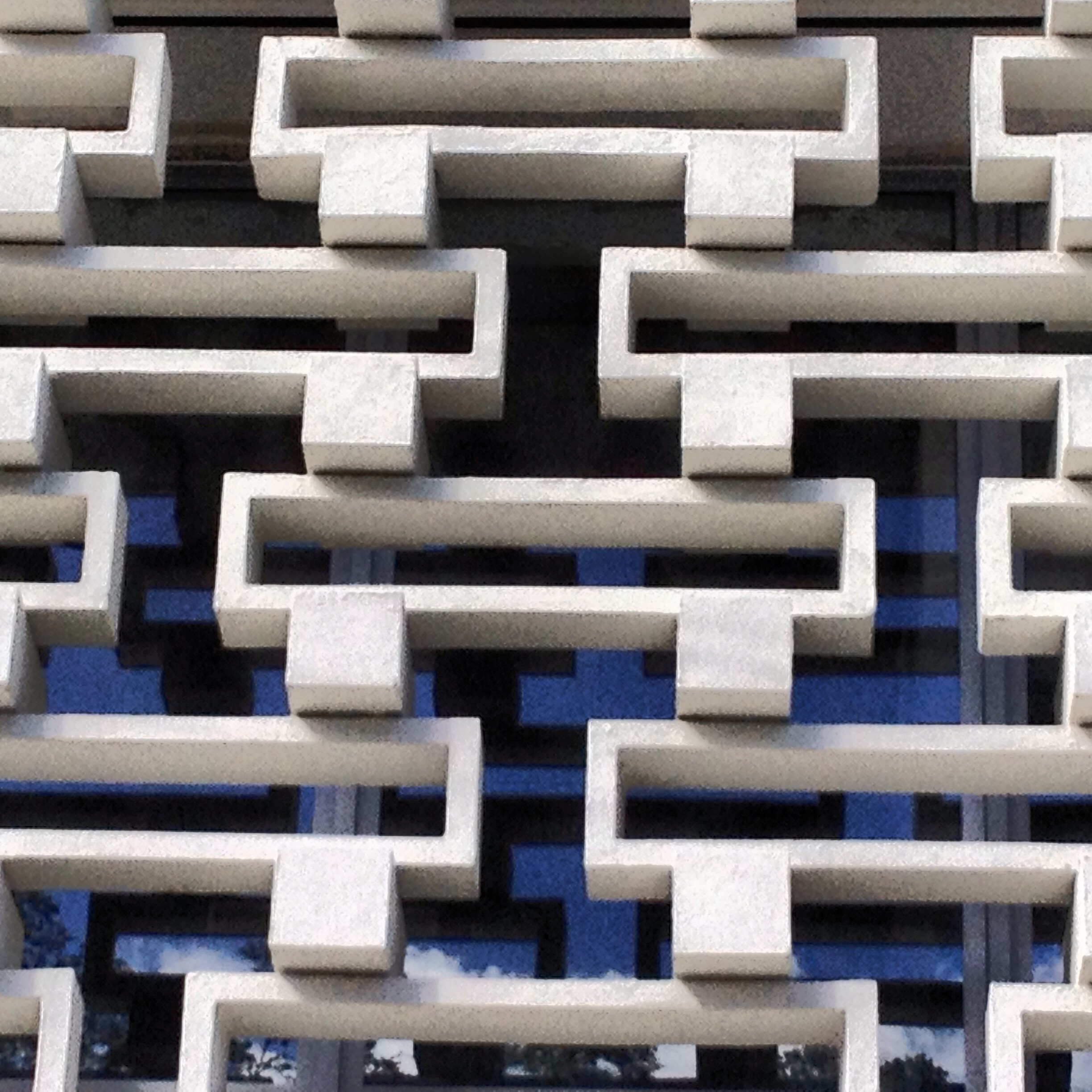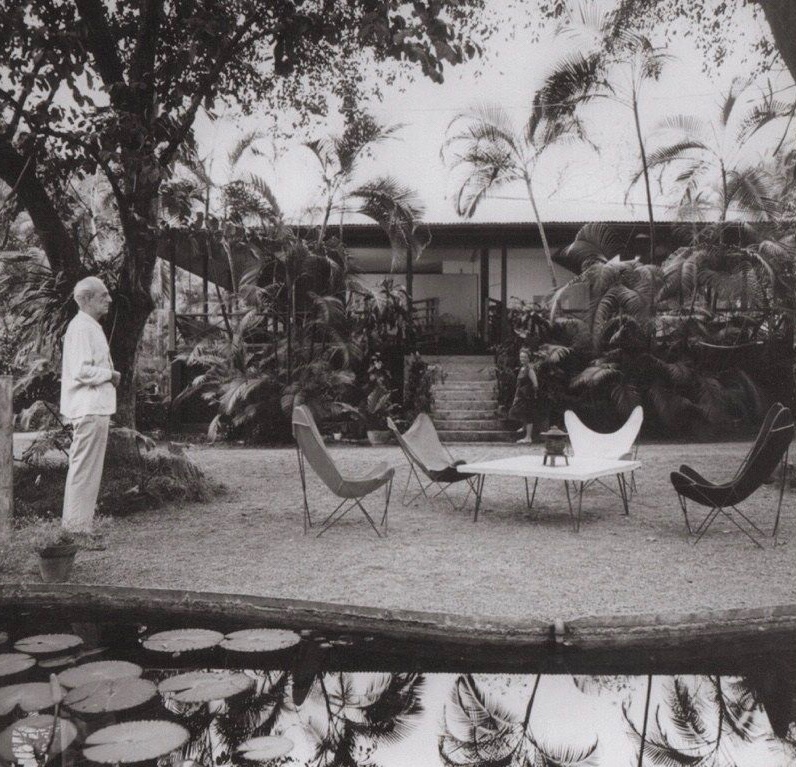
La Casa Klumb
Casa Klumb was one of the highlight subjects while teaching a course on History of Modern Architecture during my academic tenure in Puerto Rico. Even as a student in Architecture School, the almost inaccessible house had an aura that fired-up the imagination of many of us.
Now, the fire that consumed the property provoked the publishing of these notes. Moreover, the aerial videos shared on social media platforms of the house engulfed in flames prompted me to think of the last act of Los soles truncos (a dramatic comedy in two acts) by René Marqués, where a house — the symbol of a prosperous life in previous times — was consumed by fire (along with the main characters) as an act of immolation.
This thought transformed the rage and sadness I felt by this terrible loss and offered a certain sense of relief while I accounted for the state of disrepair and neglect that Casa Klumb had been suffering for decades.
A brief history
The Henry Klumb House in Sabana Llana, Río Piedras, a neighborhood of San Juan, was initially known as the Cody Ranch. The house was a nineteenth-century casona, and it acquired architectural significance from the considerable alterations performed by the German-born architect Henry Klumb in 1949.*
Klumb and his wife Else bought the house in 1947 and lived in it, along with their two sons until 1984, when both parents died in a car accident. The property remained unoccupied since then and was acquired shortly after in 1986 by the University of Puerto Rico. Despite this, it was abandoned, bearing significant degrees of deterioration over the years.
In 1997, already in a grave state of disrepair — but still retaining much of its architectural integrity — it was included as a Regional Monument in the United States National Register of Historic Places. In 2012, it was elevated to the status of National Monument by the same entity.**
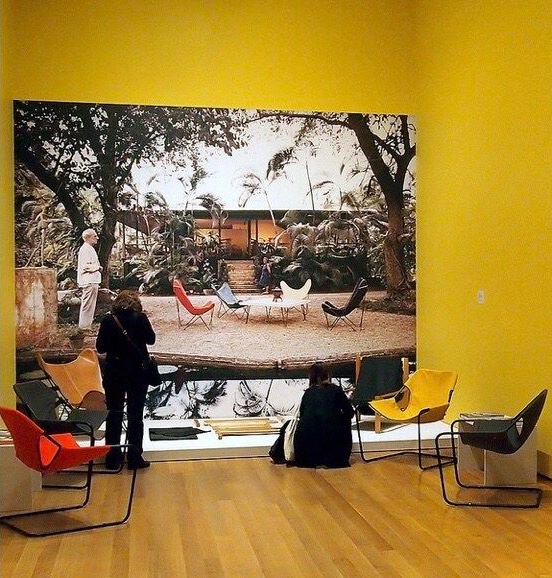
at MoMA’s exhibition Latin America
in Construction: Architecture 1955-1980.
Photograph of the exhibition by John Hill; https://www.flickr.com/photos/archidose/; accessed 05/10/2015.
In 2014 efforts were made to include the house within the World Monuments Watch’s List or endangered structures, and in March of that year, Comité Casa Klumb (a committee to oversee the restoration of the house) was created.
These efforts alongside the inclusion of Casa Klumb among the subjects at the exhibition Latin America in Construction: Architecture (from) 1955 (to) 1980 at the Museum of Modern Art in New York in the Spring of 2015 where all signs in the right direction pointing towards its preservation.
Despite raising monies and awareness for its restoration; multiple events difficulted taking the affirmative actions required to avoid its destruction and loss.***
Klumb’s intervention
The original house was a typical Caribbean casona with a pitched roof, and wood floorboards raised from the ground to allow for cross ventilation to keep the humidity of the ground away from its interiors; an open veranda or balcony wrapped the house almost entirely. Klumb’s intervention resulted in the subtraction of elements rather than adding to the existing structure. In a series of strategies that appeared to adhered more with Le Corbusier’s Open Plan approach, Klumb eliminated — almost in their entirety — the enclosing walls of the house to allow continuity between the public spaces and the veranda.

Henry Klumb, FAIA
Thus, the living room (in the front) and the dinning room (at the back) — maintaining the original turn-of-the-nineteenth-century layout — were left completely open, exposed to the natural breeze and exterior conditions; only the roof (and the fact that it was raised from the ground) provided shelter from the natural elements. The surrounding vegetation, a unique feature of the house’s siting as illustrated in the original photographs (and sketches) below, allowed an additional layer of protection.

The bedrooms remained partially enclosed. However, large operable windows and pivoting doors (with louvers) allowed for privacy while allowing cross ventilation. When opened, the doorways provided visual and physical connection with the balcony and public areas of the house. A few additional walls throughout the house, were lifted a few inches from the floor and did not touch the ceilings, to allow for the uninterrupted flow of air. The exterior wall of the main bedroom was articulated in plan to be ”floating” (detached from the rest of the encircling walls) and thorough slim swing doors, provided direct passage to the veranda and an additional form of air circulculation.
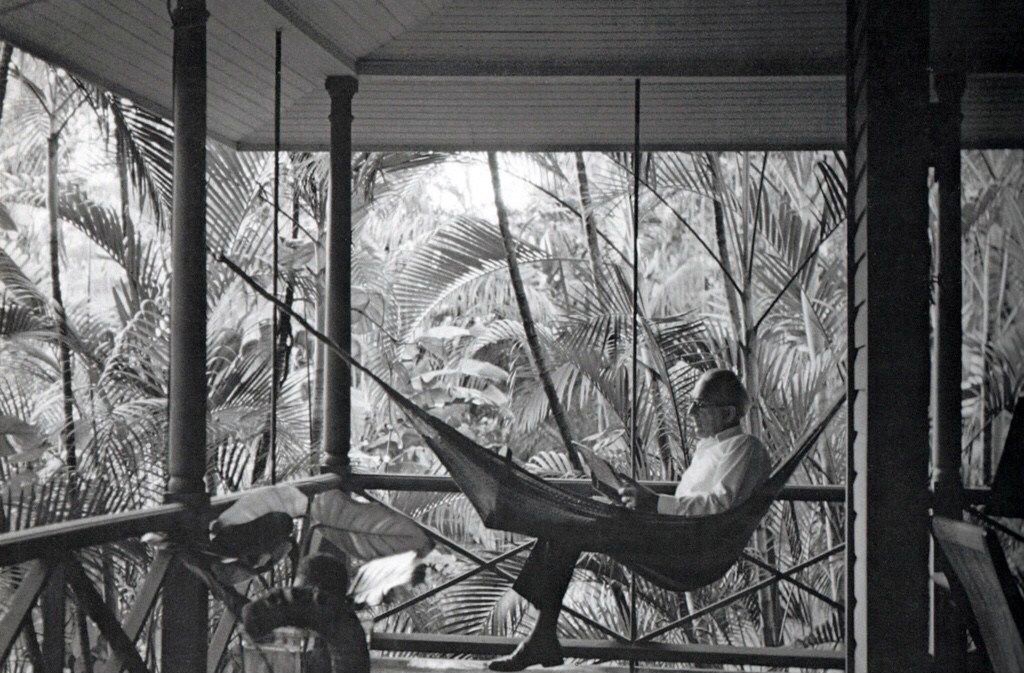





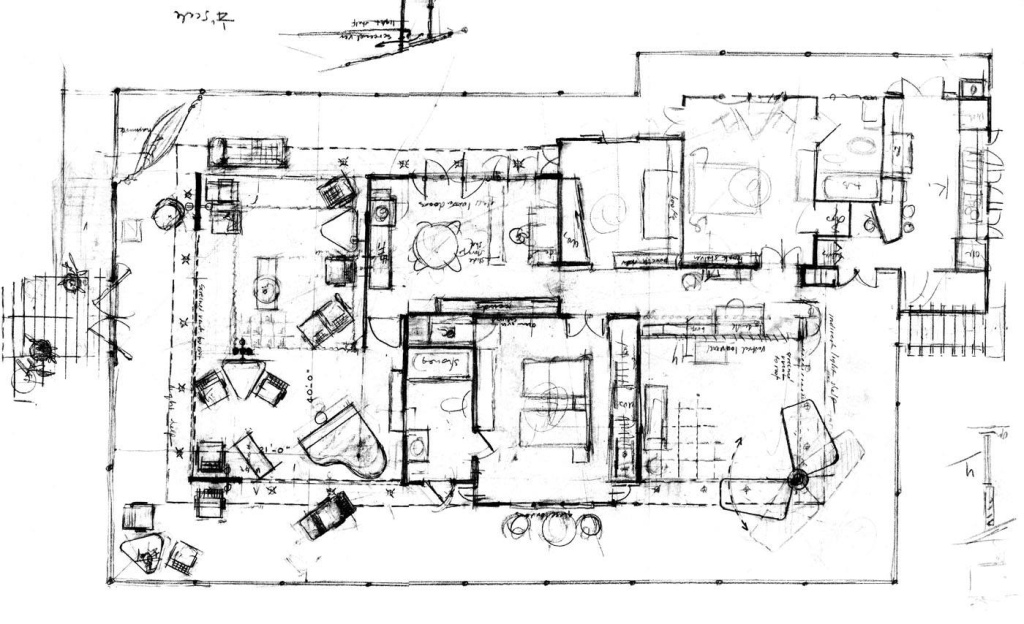
Additional notes on the history of the house
The original casona belonged to José Ramón Latimer and his wife Esther C. Cody, who rented out rooms for people visiting from the mainland. Before Klumb purchased the property for himself, and for a brief period of time between 1944 and 1945, the Cody Ranch served as the residence for Richard Neutra and his wife Dione Niedermann.
Both Klumb and Neutra served as design consultants under the government of Rexford Tugwell. However, the collaboration between them was far less cordial as imagined. Family letters written by Dion Neutra, while their sojourn in the Island, portrayed the competitive relationship of her husband and Klumb, almost as nemesis.
She explains how they managed to rent an available room at Cody Ranch and what it was like to live in Puerto Rico. In the end, the Neutra’s left to pursue his career elsewhere after not being able to secure additional work in Puerto Rico. Klumb, on the other hand, remained on the island and made prosperous professional life for himself.
Notes:
*Henry Klumb, was born in Cologne, Germany in 1905. He emigrated in 1927 to the United States to become an apprentice at Frank Lloyd Wright’s Taliesin North in Wisconsin. He left Wright’s apprenticeship after five years, and worked briefly with Louis I. Kahn and Louis Metzinger, forming the Cooperative Planners firm in Philadelphia during the Great Depression.
In 1944, Klumb was invited by Rexford Tugwell (Governor of Puerto Rico at the time) to work as a design consultant at the Public Works Design Committee. A few years later, he established the Office of Henry Klumb in San Juan from where he designed all types of private and public projects all over the Island.
** For a copy of the registration form visit: https://npgallery.nps.gov/GetAsset/4183ae4d-6f2d-4918-82b0-682a3b7ed16c (Accessed 11/12/20)
For National Register list of properties in Puerto Rico, including Casa Klumb refer to: https://www.nps.gov/state/pr/list.htm?program=all (Accessed 11/12/20
For World Monuments Watch refer to: https://www.wmf.org/project/henry-klumb-house (Accessed 11/12/20)
*** The exhibition celebrated the 60th anniversary of the show MoMA organized in 1955 about Latin American architecture built by 1945. At that time, the architectural production of a decade was presented and in representation of modern architecture in Puerto Rico, two works were exhibited: the Caribe Hilton Hotel by Toro y Ferrer Arquitectos and the Sanctuary of San Martín de Porres by Henry Klumb.
For additional thoughts on the work of Henry Klumb and MoMA’s exhibition refer to: https://anonymousarchitecture.co/2019/01/10/henry-klumb-two-buildings-one-idea/
*** The house was owned by the University of Puerto Rico, a public entity enduring significant challenges due to the economic recession. Not to mention the impact of natural events like hurricane Irma and María in 2017 and the political turmoil that forced the exit of the sitting governor; all circumstances that somewhat justify the inaction to save the structure.
Acknowledgements
All photographs are from the professional archive of Henry Klumb at AACUPR, Archivo de Arquitectura y Construcción de la Universidad de Puerto Rico (University of Puerto Rico’s Architecture and Construction Archive) unless otherwise noted.
The author made all hand sketches during a guided tour organized by the restoration committee as part of a series of activities to raise awareness of the house condition and raise funds for its rehabilitation. High-quality print outs of these sketches were donated for auction, alongside other work by myriad artists, architects, and historians during a fundraising event.
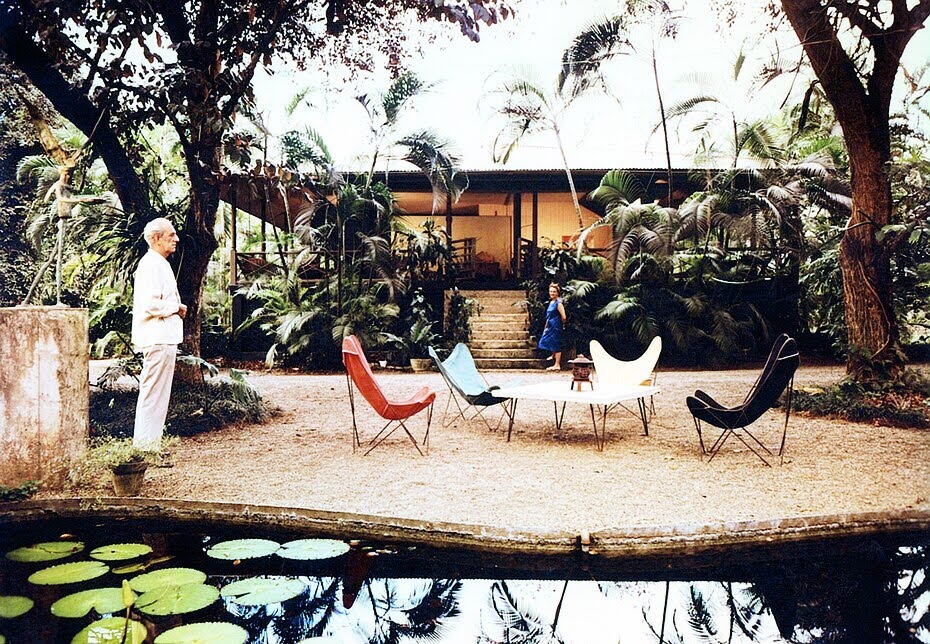
 The seed for this post was originally a discussion on the architecture of Henry Klumb* sponsored by the Preservation Committee of Puerto Rico’s Architects and Landscape Architects Association (CAAPPR) and docomomo_puerto Rico, the local chapter of the International Organization for the Documentation and Conservation of Modern Movement, that I proudly presided at the time.
The seed for this post was originally a discussion on the architecture of Henry Klumb* sponsored by the Preservation Committee of Puerto Rico’s Architects and Landscape Architects Association (CAAPPR) and docomomo_puerto Rico, the local chapter of the International Organization for the Documentation and Conservation of Modern Movement, that I proudly presided at the time.

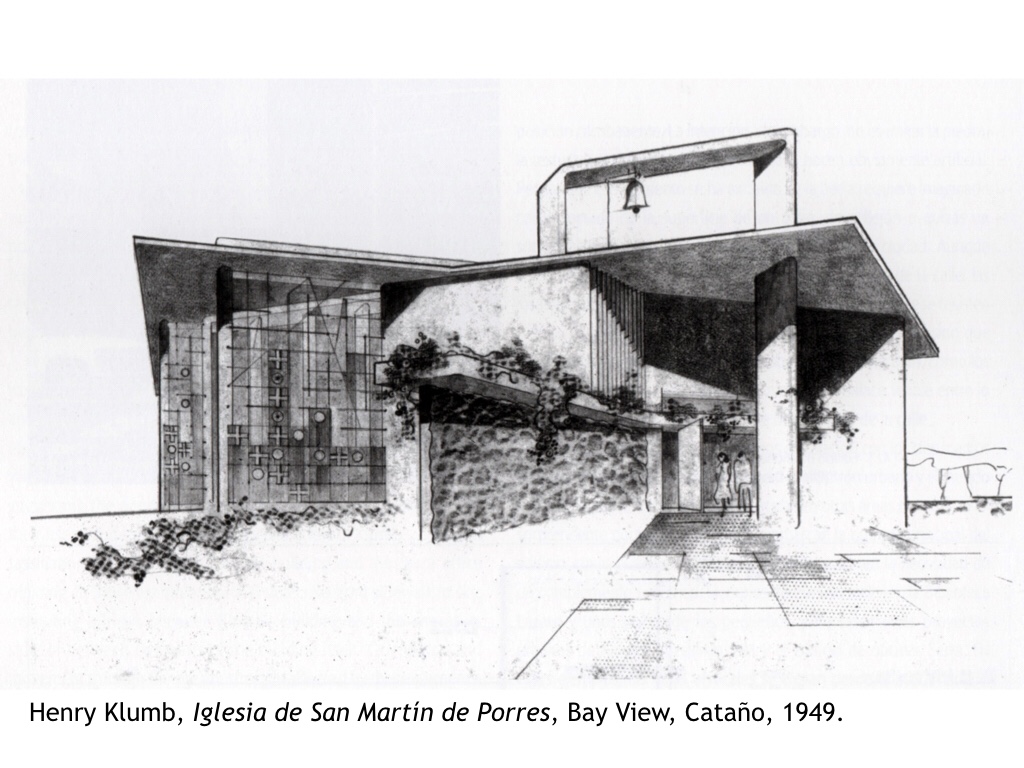
 Referring to the diagonally arranged piers employed by Klumb at San Martín as light deflectors — dazzled perhaps by the fact that the chapel is open to natural ventilation — Hitchcock wasted the opportunity to recognize the spatial idea behind the structural elements.
Referring to the diagonally arranged piers employed by Klumb at San Martín as light deflectors — dazzled perhaps by the fact that the chapel is open to natural ventilation — Hitchcock wasted the opportunity to recognize the spatial idea behind the structural elements.

 More importantly, it surprises that despite the fact that the 2015 exhibition had the support of the Architecture and Construction Archive of the School of Architecture of the University of Puerto Rico (AACUPR in Spanish), curators wasted the opportunity to include a more representative work. Henry Klumb’s Dominican Friars Convent built in 1958 in Bayamón, Puerto Rico, would have proved a better example.
More importantly, it surprises that despite the fact that the 2015 exhibition had the support of the Architecture and Construction Archive of the School of Architecture of the University of Puerto Rico (AACUPR in Spanish), curators wasted the opportunity to include a more representative work. Henry Klumb’s Dominican Friars Convent built in 1958 in Bayamón, Puerto Rico, would have proved a better example. A work in which the late architect, 10 years after having conceived San Martín de Porres, had enough time to rethink and mature the spatial ideas and architectural details he would rehearse in Cataño.
A work in which the late architect, 10 years after having conceived San Martín de Porres, had enough time to rethink and mature the spatial ideas and architectural details he would rehearse in Cataño.
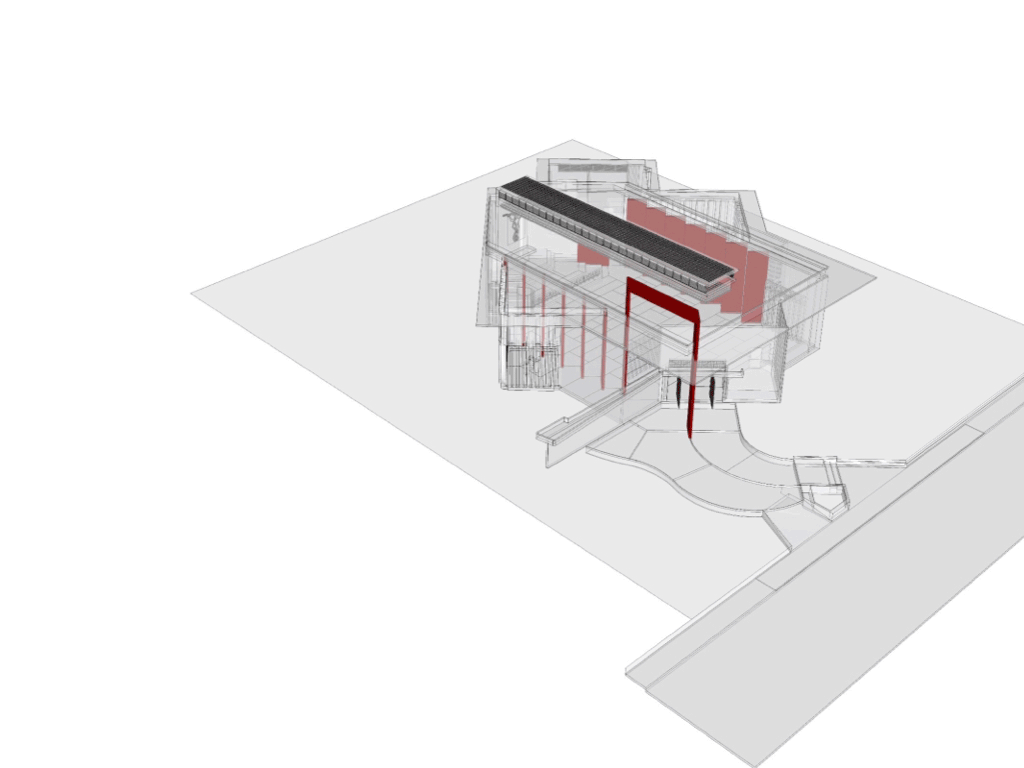
 The photographs and sketches above illustrate how the diagonally arranged piers provide a dual spatial experience. On both buildings, while attending mass (looking at the altar) the angled piers become a solid plane that frames our attention towards the liturgical event. In contrast, looking away from the altar the piers become a transparent plane that allows the interior space to extend beyond its built boundaries.
The photographs and sketches above illustrate how the diagonally arranged piers provide a dual spatial experience. On both buildings, while attending mass (looking at the altar) the angled piers become a solid plane that frames our attention towards the liturgical event. In contrast, looking away from the altar the piers become a transparent plane that allows the interior space to extend beyond its built boundaries.




